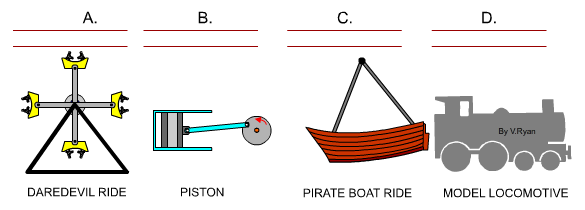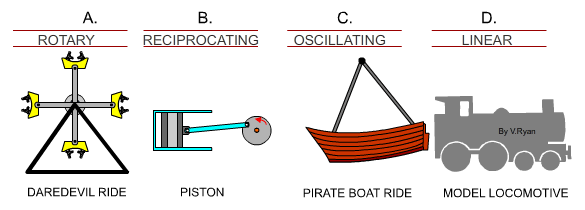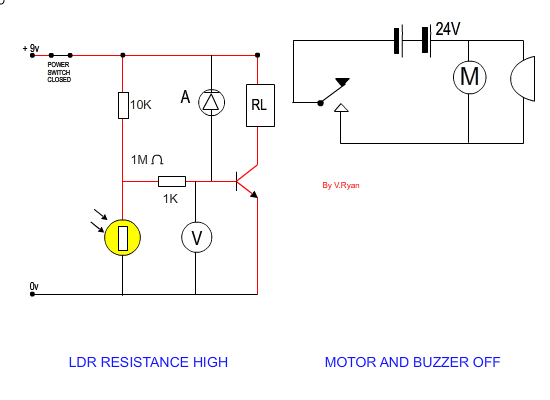| |
| CLICK HERE FOR INDEX PAGE |
| |
| SYSTEMS PREPARATION QUESTIONS 2008 - 2 |
| |
| V. Ryan © 2008-2017 |
| |
| PDF FILE - CLICK HERE FOR PRINTABLE WORKSHEET |
| |
| 5. Explain why the gear system shown above (rack
and pinion, question 4) is used where there are speed inclines. |
| |
| |
| ANSWER |
| |
| Trains cannot travel up steep inclines as their wheels
have no grip. The rack and pinion allows the train to grip the track. The
pinion is a special gear. Its teeth ‘mesh’ with the teeth on the rack,
pulling the train up the incline. |
| |
| 6. Motion involves movement of some kind. Four types of
movement are listed below. Label the diagrams that represent motion with
the correct name. |
| |
 |
| |
| ANSWER |
| |
 |
| |
|
|
| |
| 7. The items listed below all involve movement. Label
each diagram with the correct type of movement |
| |
 |
| |
| ANSWER |
| |
 |
| |
| 8. The sensor circuit seen below is used to sense the
movement of carriages on a roller coaster. It is normally positioned
before a riders platform. When a carriage is arriving the sensor detects a
drop in the light level and a motor changes the signal and sounds a buzzer
ensuring that the set of riders stand in the safe zone as it arrives. |
| |
 |
| |
| A. Why has the circuits designer used a relay ? |
| |
| |
| |
| |
| |
| POSSIBLE ANSWER |
| |
| The relay separates the two circuits. The sensor
operates using 9 volts whilst the secondary circuit operates using 24
volts. The relay separates the two sources of power as well as the two
sets of components. |
| |
|
|
| |
| 8b. Name the component labelled ‘A’ and
explain why its function. |
| |
| NAME - COMPONENT 'A': |
| |
| |
| FUNCTION: |
| |
| |
| |
| |
| ANSWER |
8b. Name the component labelled ‘A’ and
explain why its function.
|
| |
| NAME: DIODE |
| |
FUNCTION:
To protect the circuits components form back EMF. When current to a relay
is removed the relay can emit current, sending it round the circuit in the
opposite direction. This can damage sensitive components such as
transistors. The diode prevents this happening. |
| |
| 8c. What happens to reading on the voltmeter
when a train passes the sensor ? |
| |
| |
| |
| |
| |
| ANSWER |
| |
| When the train passes the sensor circuit the light
level drops. This increases the resistance of the LDR. Current no longer
flows through the LDR and consequently flows to the base of the
transistor. The voltmeter will show an increase as a result. |
| |
| CLICK HERE FOR ELECTRONICS INDEX PAGE |
| |




